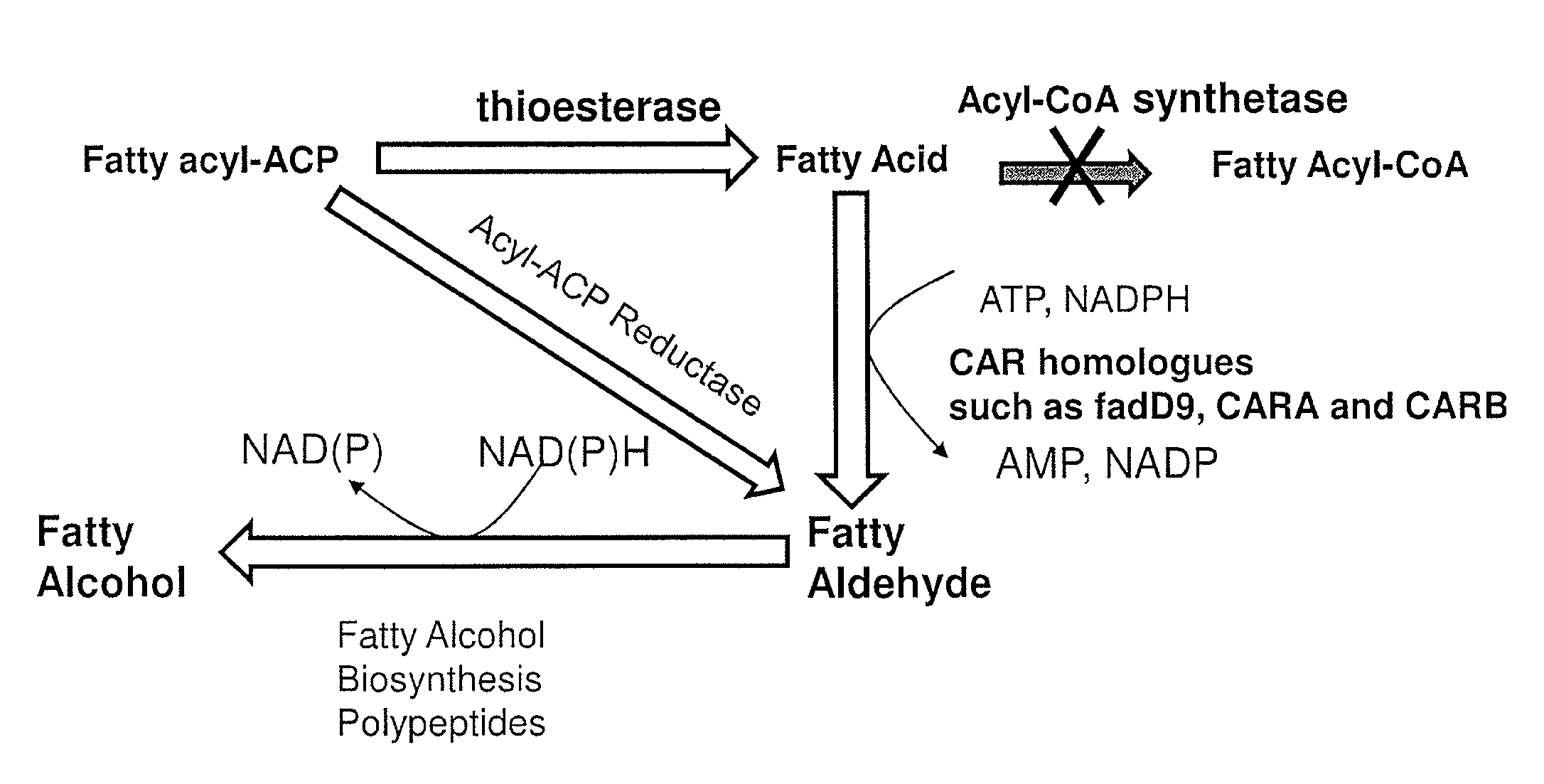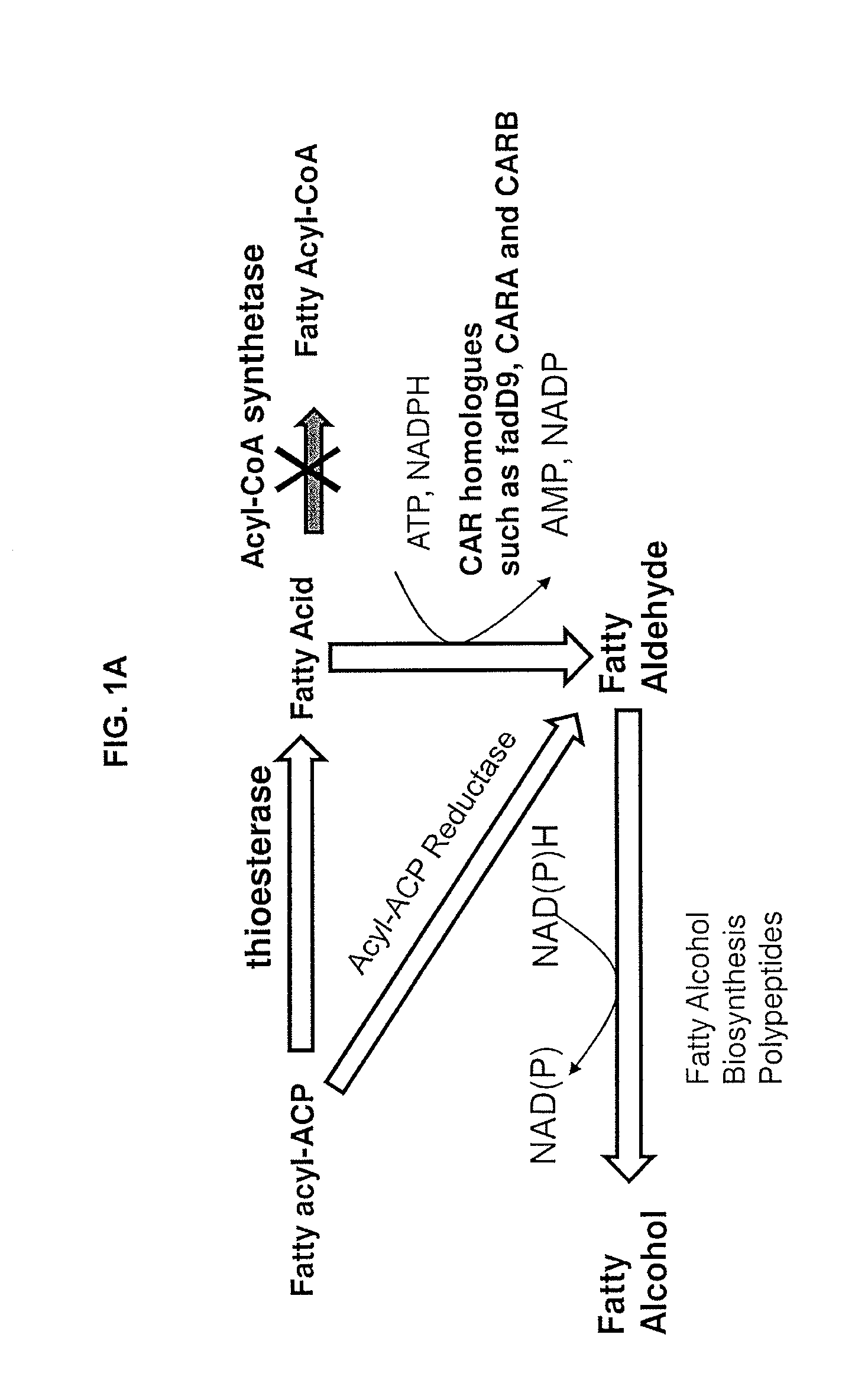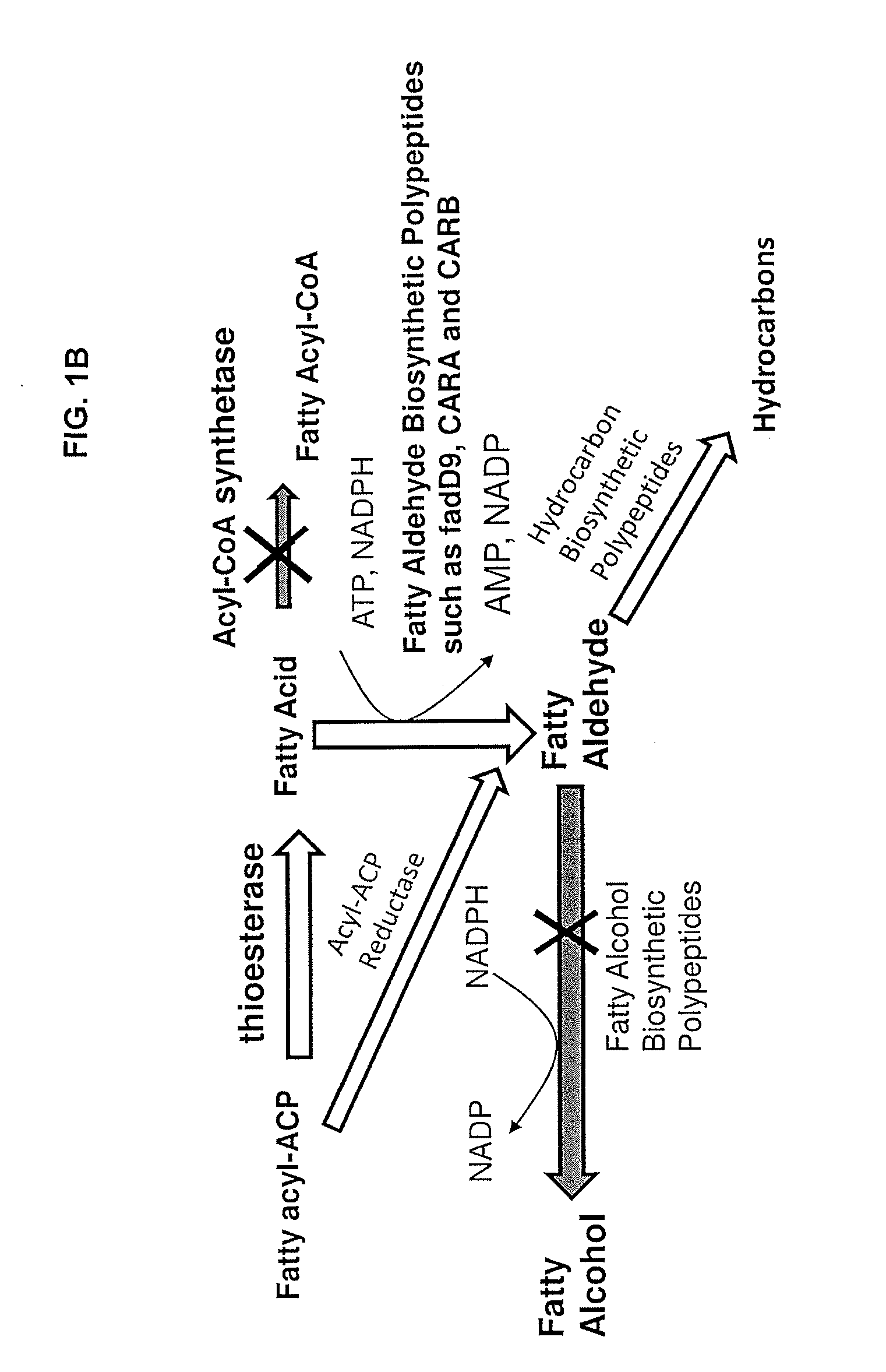Methods and compositions related to fatty alcohol biosynthetic enzymes
a biosynthetic enzyme and fatty alcohol technology, applied in the field of methods, can solve the problems of high environmental cost, high cost of petroleum exploration, and inefficient process
- Summary
- Abstract
- Description
- Claims
- Application Information
AI Technical Summary
Benefits of technology
Problems solved by technology
Method used
Image
Examples
example 1
[0322]An AlrA enzyme from Acinetobacter sp. M-1 has been shown to catalyze the reduction of fatty aldehyde into fatty alcohols in vitro at neutral or low pH conditions. (Tani et al. Appl. Environ. Microbiol. 66(12):5231-5 (2000)). However, E. coli fatty alcohol biosynthetic polypeptides, which are capable of catalyzing the reduction of fatty aldehydes to fatty alcohols, were not identified, although it has been reported that E. coli constitutively expresses such a reductase activity. (Naccarato et al., Lipids 9(6):419-28 (1974)). It had also been reported that the E. coli reductase activity was NADPH-dependent. Id.
[0323]A BLAST search of the Acinetobacter baylyi ADP1 genomic and protein databases for homologs of Acinetobacter sp. M-1 AlrA revealed an Acinetobacter baylyi ADP1 homolog, AlrAadp1 (GenPept Accession Number CAG 70248.1), has about 79% identity to the Acinetobacter sp. M-1 AlrA.
[0324]This example describes an experiment verifying that co-expression of a heterologous carbo...
example 2
[0338]This example describes the identification of a fatty alcohol biosynthetic polypeptide, YjgB, in E. coli.
[0339]E. coli contains multiple enzymes that catalyze the reversible oxidoreduction of fatty aldehydes and fatty alcohols. A BLAST search and comparison of the E. coli K12 genomic and protein databases for homologs of Acinetobacter sp. M-1 AlrA revealed that the E. coli enzyme YjgB might be the closest homolog with an about 57% sequence identity. This example sought to verify the fatty alcohol biosynthetic activity of E. coli YjgB by overexpressing YjgB with a CarB in E. coli and measure the accumulation of fatty aldehyde and production of fatty alcohols.
[0340]The plasmid pETDuet-1-'tesA-yjgB carrying 'tesA and yjgB (a putative alcohol dehydrogenase; GenBank accession number, NP—418690; GenPept accession number AAC77226) from the E. coli K12 strain was prepared.
[0341]The gene yjgB (GenBank accession number, NP—418690) insert was amplified using PCR from the genomic DNA of E...
example 3
[0350]This example describes the identification of other fatty alcohol biosynthetic polypeptides in E. coli.
[0351]A reverse genetic approach was used to identify potential fatty alcohol biosynthetic genes in E. coli MG1655 cells by expressing the acyl-ACP reductase YP—400611 from Synechococcus elongatus (Synpcc7942—1594) (SEQ ID NO:137). Four 3 mL LB cultures were grown overnight at 37° C., and 55 μL of stationary phase cultures were used to inoculate four independent 5.5 mL of LB. Those 5.5 mL cultures were then grown to an OD600 of 0.8-1.0 and were then used to inoculate a corresponding number of 2 L baffled shakeflasks, each with 500 mL Hu-9 minimal media. 20 hrs after induction the cells were pelleted at 4,000×g for 20 min. The cell pellet was resuspended in 30 mL of 100 mM phosphate buffer at pH 7.2 with 1× Bacterial Protease Arrest (G Biosciences). The cells were lysed in a French press at 15,000 psi with two passes through the instrument. The cell debris was then removed by ...
PUM
| Property | Measurement | Unit |
|---|---|---|
| Fraction | aaaaa | aaaaa |
| Density | aaaaa | aaaaa |
| Fraction | aaaaa | aaaaa |
Abstract
Description
Claims
Application Information
 Login to View More
Login to View More - R&D
- Intellectual Property
- Life Sciences
- Materials
- Tech Scout
- Unparalleled Data Quality
- Higher Quality Content
- 60% Fewer Hallucinations
Browse by: Latest US Patents, China's latest patents, Technical Efficacy Thesaurus, Application Domain, Technology Topic, Popular Technical Reports.
© 2025 PatSnap. All rights reserved.Legal|Privacy policy|Modern Slavery Act Transparency Statement|Sitemap|About US| Contact US: help@patsnap.com



